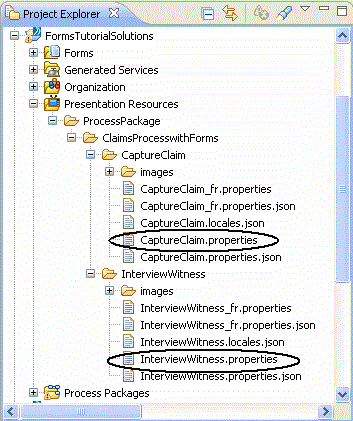Localization of Forms
With TIBCO Forms, you can create forms that support multiple languages.
Form logic, including layout and control types and validation rules, is stored in the form file. Language-specific information, including labels and validation messages, is stored in locale-specific properties files.
To simplify the localization of forms, all text that appears on a form is stored in a properties file. The properties file includes the strings that make up the labels for controls and panes, as well as the strings for hints, validation messages, and error messages.
Each form has a base properties file that is generated automatically when the form is created, and is regenerated each time the form is saved. This file appears in Presentation Resources special folder in the Project Explorer. The base properties file contains the strings that appear as labels and messages in the form’s property sheets.
To create a localized version of a form, you will make a copy of the base properties file, rename it, and edit the strings it contains.
The renamed locale-specific versions of the properties file will not be automatically regenerated, and thus your locale-specific strings will not be lost when the form is saved.

